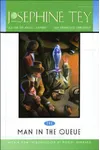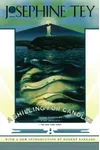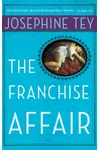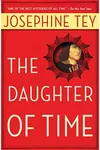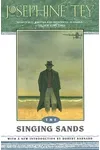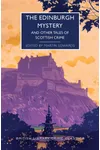Picture a Scottish storyteller who turned the mystery genre upside down with a single book that rewrote history—meet Josephine Tey! Born Elizabeth MacKintosh in 1896, this enigmatic author crafted tales that blended psychological depth with historical intrigue, earning her a lasting place in crime fiction. Her masterpiece, The Daughter of Time, didn’t just solve a fictional crime; it challenged centuries-old assumptions about Richard III, proving fiction could reshape our view of the past.
Tey’s life was as mysterious as her novels. A private soul who shunned the spotlight, she lived quietly in Inverness, Scotland, weaving stories that captivated readers worldwide. Let’s dive into the world of Josephine Tey, where every page hums with wit, suspense, and a touch of rebellion.
The Making of Josephine Tey
Born in Inverness on July 25, 1896, Elizabeth MacKintosh grew up in a modest household, the eldest daughter of a fruiterer and a former teacher. She honed her sharp mind at Inverness Royal Academy before training as a physical education teacher at Anstey Physical Training College in Birmingham. After teaching in England and Scotland, she returned home in 1923 to care for her ailing mother, a turning point that sparked her writing career. Under the pseudonym Gordon Daviot, she penned plays and early novels, but it was as Josephine Tey that her literary star truly shone.
Josephine Tey’s Unforgettable Stories
Tey’s mystery novels broke the mold of Golden Age detective fiction. While contemporaries like Agatha Christie leaned on intricate puzzles, Tey wove psychological complexity and unconventional narratives into her work. Her hero, Inspector Alan Grant, wasn’t your typical sleuth—he was a shrewd observer of human nature, solving crimes with intellect and intuition.
Her 1951 novel, The Daughter of Time, is her crowning achievement. Bedridden in a hospital, Grant investigates the historical mystery of Richard III and the Princes in the Tower, concluding that the king was unfairly maligned. Voted the greatest crime novel ever by the Crime Writers’ Association in 1990, it’s a gripping blend of history and detective work. The Franchise Affair (1948) flips the script with no murder at all, focusing on a kidnapping accusation that unravels small-town secrets. Brat Farrar (1949) explores identity and deception as a young man impersonates a missing heir, while The Singing Sands (1952), published posthumously, sends Grant on a haunting Highland adventure. Tey’s sparse output—only eight mysteries—belies her immense impact, with each book a masterclass in storytelling.
Why Josephine Tey Matters
Josephine Tey didn’t just write mysteries; she redefined them. Her focus on psychological motives and historical context paved the way for modern crime writers like Patricia Highsmith and Val McDermid, who credit Tey with bridging the Golden Age and contemporary fiction. Her refusal to follow genre conventions—think mysteries without murders or detectives stuck in bed—made her a trailblazer. Tey’s legacy endures in her timeless novels, still in print and cherished by readers who love a story that challenges assumptions.
Her influence extends beyond books. Nicola Upson’s mystery series casts Tey as a fictional detective, a testament to her enduring mystique. By bequeathing her estate to the National Trust, Tey ensured her love for the English countryside lived on, much like her stories.
- Born: July 25, 1896, Inverness, Scotland
- Key Works: The Daughter of Time, The Franchise Affair, Brat Farrar, The Singing Sands
- Awards: The Daughter of Time voted greatest crime novel by Crime Writers’ Association (1990)
- Died: February 13, 1952, London
Snag The Daughter of Time and dive into Josephine Tey’s brilliant world of mystery and history—your bookshelf will thank you!
